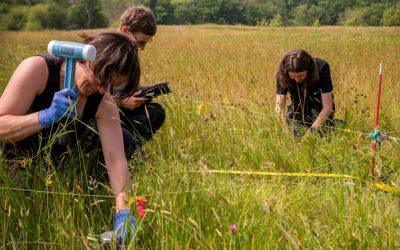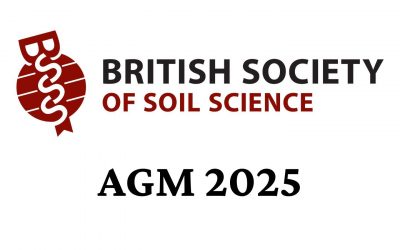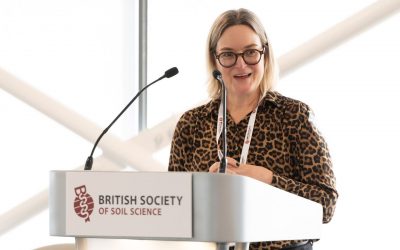Introducing the Russell Review ‘Artificial Intelligence in Soil Science’ by Alexandre M.J.-C. Wadoux
The European Journal of Soil Science (EJSS), published by the British Society of Soil Science and Wiley, is delighted to introduce a highly anticipated Russell Review on ‘Artificial Intelligence in Soil Science‘ written by Alexandre M.J.-C. Wadoux.
The paper was written on invitation, as part of the EJSS 75th anniversary celebrations and provides a fascinating insight into Artificial Intelligence (AI) and its role in soil science.
Alexandre Wadoux, who completed his PhD at Wageningen University in 2019, has become a leading expert in applying AI techniques to soil science. After working as a postdoctoral researcher at the University of Sydney, he now works at INRAE, France’s National Research Institute for Agriculture, Food, and Environment. His state-of-the-art application of advanced quantitative approaches, including machine learning in soil mapping, mark him as a leader in the field.
Few would disagree that AI holds potential for advancing knowledge and innovation. Over the past decades, substantial research has been devoted to the development and application of AI in soil science. While most of today’s AI applications in soil science are related to machine learning (ML), AI also encompasses other fields such as digital image analysis, natural language processing (NLP), expert systems, and knowledge representation. This review aims to provide a comprehensive overview of AI in soil science.
The major findings are as follows:
- AI in soil science is diverse, with applications in decision support systems, image classification, prediction with ML and expert systems;
- AI in soil science is currently almost exclusively characterized by ML;
- Applications of ML are predominantly found in the field of digital soil mapping and for the development of pedotransfer functions;
- Most AI applications are used for prediction purposes.
Alexandre Wadoux says: –
“There is certainly much to be learned from and done with artificial intelligence, but one should not forget that truly creative and novel scientific directions—those that extend beyond the existing body of knowledge—come only from scientists. I see a future where the scientific direction remains with humans, while execution increasingly falls to AI.”
Over recent decades, innovations in laboratory techniques – such as DNA sequencing, stable isotope analysis and spectroscopy – have greatly advanced soil chemistry and soil biology. Similarly, remote sensing, GIS and geocomputation have revolutionized soil mapping, and enabled novel spatial analyses in soil geography more broadly. Sensor technologies, including electromagnetic induction and ground-penetrating radar, have significantly contributed to soil physics and soil hydrology and, when combined with robotics, have facilitated precision agriculture.
With the rise of Artificial Intelligence (AI), this is set to change dramatically. Computers are becoming ‘intelligent’, taking on more roles in soil science. Beyond highlighting Al’s contributions, Alexandre’s Russell Review also addresses its risks and limitations, including data quality concerns and ethical issues related to data sharing and harvesting.
Gerard B.M. Heuvelink (EJSS Deputy Editor) says: –
“Alexandre explores potential Al-driven advancements that could reshape soil science. He envisions Al playing a far greater role in scientific discovery, writing: “In the future, it is likely that soil science will be driven by Al-augmented researchers, where Al assists and accelerates nearly all the tasks involved in the scientific process.” However, he also reassures human researchers, stating: “Ultimately, the vision remains with the human, while the execution increasingly falls to Al.” I sincerely hope Alexandre is right. When EJSS celebrates its 100th anniversary in 25 years, I hope human soil scientists remain at the forefront, guiding and advancing soil science research. Time will tell.”
This Russell Review by Alexandre Wadoux examines the role of Al in soil science over past decades and explores how AI will transform soil science in the future. Through a systematic literature review, Alexandre identifies the soil science domains where AI has made the most significant contributions.
Paul Hallett (BSSS President) says: –
“As a material that emerged from the combination of geology, weather, biology and human impacts, the complexity of soils is vast. Added to this complexity is the opaque and spatially variable nature of soil, which makes it scientific study complex. Alexandre’s review eloquently captures the potential of AI to help soil scientists obtain and process data, integrate and interpret complex data-sets, and explore trends in landscapes or with land management to help guide practical decisions about how to get the most out of soil.”
To read the paper, click here.
The British Society of Soil Science (BSSS) is an established international membership organisation committed to the study of soil in its widest aspects. The society brings together those working within academia, practitioners implementing soil science in industry and all those working with, or with an interest in soils.




